Its day 1, today, 25th February 2008, a new semester, whole new beginning...
Beginning towards a whole new struggle..tougher than before, with 2 marketing subjects at a time.!. God be with me..!..
Monday, February 25, 2008
Day 1, new Semester
Posted by
Calvin's
at
10:01 PM
1 comments
![]()
Saturday, February 16, 2008
Million Dollar Point
The Seabees built a ramp running into the sea and every day Americans drove trucks, jeeps, ambulances, bulldozers, and tractors into the channel, locking the wheels and jumping free at the last second. Engine blocks cracked and hissed. Some Seabees wept. Ni-Vanuatu witnessing the destruction of wealth their island would never see again, at least in their lifetimes, thought the Americans had gone mad.1
Despite salvage efforts,2 the dumping ground remains visually astounding, "a monument," as one diving website puts it, "to the futility of war."3
Buttons was one of two bases the American military established on the archipelago; the other, Roses, was constructed shortly afterward on the nearby island of Efate. Base construction on Santo and Efate was very rapid; in just weeks, several islands along the periphery of the Condominium's jurisdiction were transformed into bustling American military hubs. On the theory that land invasion of Japan lay ahead in the prosecution of the war—the Manhattan Project remaining top-secret, and indeed, subject to failure until the last tests had been completed—American manpower and material were poured into the region. The base at Efate and the airstrip on Santo processed half a million soldiers. (In comparison, the entire native population of Vanuatu at the time was 60,000.4) As it turned out, however, the South Pacific theater had been oversupplied for its brief stint in the war, and combat-based military activity on Vanuatu was short-lived. Action quickly moved north toward Japan, and barely six months after the bases' completion, Vanuatu comprised the extreme rear of the American line. Although both bases performed important roles in the battles of Guadalcanal—Efate had the chief hospital, and Santo, which possessed the southernmost American airstrip, received wounded soldiers and combat equipment—they were primarily utilized as holding grounds and outfitting stations. As a Major Heinl reported to National Geographic in August 1944, "jungles [were] cleared to make way for miles of stacked munitions and supplies."5
The storage on Vanuatu was never touched again, except to be thrown away. Despite the merchandise stockpiled on Santo and Efate, American industry continued to produce and ship new products; it was economically advantageous for the American military to use these rather than to rehabilitate the storage.6 When the war ended, the Vanuatu holdings constituted a daunting pile of poorly organized, mislabeled crates. To compound the problem, four years in the jungle had deteriorated some of the material; shipping costs were expensive, and only a handful of soldiers remained on the islands to sort and distribute the cargo. And as if that wasn't enough, the enormous quantity of surplus—the "miles" of supplies—presented a major allocation dilemma. Santo and Efate were not unique in this situation. The Philippine naval base at Calicoan, for example, was completed just two weeks before V-J day. Equipped for 5,500 men, the base immediately abandoned its initial mission—to support the final push in the Pacific—and began a Sisyphean dismantling: "[Calicoan's] second and final mission was born, that of disposing of itself."7
Getting rid of military surplus entailed selling, redistributing, returning, or dumping some nine million tons of material, valued at nearly four billion dollars.8 The huge task, known as Operation Roll-Up, was strained by the pressure to bring American troops home (under Operation Magic Carpet), and plans were hastily executed, often without sufficient manpower. Under the Surplus Property Act (1944), the American military developed a complex bureaucratic apparatus to handle disposal decisions. Area Commanders had authority to jettison all material deemed used or deteriorated. They then declared their excess, defined as everything above "reasonable stock levels,"9 to ComServPac (Commander, Service Squadrons, Pacific Fleet) and to the local dispatch of the Foreign Liquidation Commission, an agency of the US State Department. ComServPac received the declarations, investigated options, and eventually issued "final disposal instructions."10
Operation Roll-Up was hindered at all levels by the logistics of immense disposal. Bulk sales of scrap metal and construction equipment were negotiated with China and the Philippines; other governments made smaller purchases, and a few small sales were locally arranged. According to demands from the nascent United Nations Relief and Rehabilitation Administration, the United States donated some supplies to South Pacific islands to aid post-war reconstruction. Nevertheless, the vast amount of surplus haunted allocation efforts. As the operation continued, ComServPac became overwhelmed with declarations of excess, and Area Commanders were invested with increasing authority to dispose of local property as they saw fit.
When efforts at redistribution and sale failed, the property was destroyed or dumped at sea. Military records account for the underwater dumping of some ammunition but nothing on the scale of Million Dollar Point.11 The official Navy record of Operation Roll-Up maintains that "items were to be retained to the extent of their useful life."12 Of course, a short "useful life" works in tandem with healthy capitalism; the decision to dump, like the decision to over-produce, was indubitably influenced by economic concerns. Thurston Clarke plausibly suggests that the property was sunk because the American economy could not have recovered from an influx of lower-priced, almost-new goods.13 Still, why wasn't the property given to the ni-Vanuatu? Ironically, the bulk of the surplus, an estimated 90 percent, consisted of civilian items14—items the ni-Vanuatu would have undoubtedly appreciated.
It is possible, as Clarke mentions, that the military tried to sell the material to the Franco-British colonials, and dumped it in retaliation when they refused to buy. Ni-Vanuatu presumably witnessed the dumping, but no one has gathered their stories. However, Solomon Islanders' oral histories are helpful on this point, as their experience of American installations and demobilizations were similar. The Solomon Islands, just to the north of the Vanuatu group and under British control, were another focal point of the American war effort; surplus from these islands' bases was destroyed as well. Vehicles were rolled off barges into the water; equipment was burned, and a huge cache was buried at Stirling Island. The base buildings were blown up. According to witnesses' testimony, Solomon Islanders held the British colonial government, not the American military, accountable for this destruction. Islander Nathan Oluvai describes,
Timber and other building materials, clothing, and food, it was all burned or spoiled or left to rot or thrown into the sea—anything so that we didn't get it. This made the Americans cross at the British. They wanted to shoot Mr. Gill [a British authority] once because he stopped us from taking the food. We used to hide and wait for them to throw away this food—like new tins of bacon and sausage. New ones, new clothes. Then his police would report us. Sometimes the Americans would just put things outside their tents meaning for us to take them.15
The Solomon Island narratives concur: the Americans tried to leave pots, pans, guns, and timber to the locals, but the booty was confiscated by the British. Islanders who took anything, even scrap slated for destruction, were severely punished.
The colonial politics at play in the Solomon Islands were also active in Vanuatu. The Franco-British interest in protecting the status quo was continually at odds with the behavior of the Americans. In order to build their bases as quickly as possible, the US military conscripted island natives for three-month labor stints. Conflicts of interest arose between the Condominium—who wanted to "maintain prewar relations of colonial domination" and also keep a labor reserve for local business, plantation, and domestic needs—and the US military, who needed large numbers of recruits healthy enough to work arduous hours.16 Tensions were exacerbated by the Americans' low opinion of Condominium administrators, whom they judged incompetent. The joint government structure had created an inefficient bureaucracy, including two separate police forces and a complex judicial system presided over by a neutral judge appointed by the king of Spain.17 Initially, the Condominium had supervisory duties for the Vanuatu laborers, but the US military quickly took over, disgusted by the camps' poor-quality food and inadequate sanitation. GIs poked fun at ceremonial practices that seemed to demonstrate colonial impotence; Solomon islanders carried Franco-British officials bodily over water, for example, and the Americans scoffed.
Soldiers were thus disinclined to follow the colonial government's strict rules on how and when the Americans were to interact with the ni-Vanuatu. The military supplied material luxuries to the people that the Condominium had outlawed, including cigarettes, alcohol, penicillin, dishware, and tinned meat. Other interventions were inadvertent; anthropologists Lamont Lindstrom and Geoffrey M. White suggest that Americans' casual use of the term "brother" fostered notions of American /ni-Vanuatu kinship.18 Ni-Vanuatu placed high cultural value on the exchange of food, and wartime labor corps who ate in mess halls with American GIs regarded the experience very seriously. The ni-Vanuatu apparently construed their relationship with the Americans as one of equal exchange: They gave their labor to help the Americans win the war, and received material goods and friendship in return.
These arrangements stood in sharp contrast to the hierarchies of the Condominium, and exactly as the colonial government feared, wartime interactions gave impetus to independence movements in the archipelago. A new awareness of socio-political identity was cultivated that "affected and challenged ... the discourses and truths of ruling economic and political regimes."19 As it happened, such political independence movements were largely mobilized via Vanuatu cult religions, in which political and spiritual concerns mixed with preternatural intensity.
Issue 10 Spring 2003
Million Dollar Point
--------------------------------------------------------------------------------
Sasha Archibald
http://www.cabinetmagazine.org/issues/10/million_point.php


Maybe downloading or clicking on the pic to view the larger size will be clearer...as i don wan to pollute the map with writing...
Good TIme sharing...cheers!
Posted by
Calvin's
at
4:09 PM
0
comments
![]()
Tuesday, February 12, 2008
The RM600 million scandal; Sarawak NOT included in funds allocation jus because UMNO is not in SARAWAK??Is Sarawak part of Malaysia?
The RM600 million question: Can money belongs to the people channeled to Umno divisions?
Those who have watched TV3 News at 8pm on 13 November 2006 would remembered that the Prime Minister Datuk Seri Abdullah Ahmad Badawi has announced to the press immediately after the closed-door Briefing to Umno delegates (before the Umno Assembly), that he has decided to allocate RM3 million each to all Parliamentary divisions (he did not specifically said it was only for the Umno divisions) for rural development. But he said the money adds up to about RM600 million, which tallied with the total number of UMNO divisions in the country, i.e.191. (191xRM3m=RM573m). The news was also reported in The Star, Utusan Malaysia and other newspapers on 14 Nov 2006.
Deputy Prime Minister Datuk Seri Najib Tun Razak followed by saying that this RM600 million will be added to the Ninth Malaysian Plan budget, on top of the allocation of RM1.5 billion for rural development. But any amendments or additions to 9MP must be done by Parliament during the mid-term review. This RM600 million allocation was not even approved by the Cabinet let alone the Parliament.
This matter was raised by Salahuddin bin Ayub, the PAS Member of Parliament for Kubang Kerian on 15 November 2006 and the official reply he got from the government is that the money will be managed by the government and not by the Umno division heads. ( DR.15.11.2006 Page 35). This is a lie!
Before we go deeper, please read the letter from Deputy Works Minister dated 13 November 2006:
TIMBALAN MENTERI KERJA RAYA
MALAYSIA
TMKRM/0033/20
13 November 2006
Ketua Pengarah Kerja Raya
Ibu Pejabat JKR
Tingkat 5, Blok F
Kompleks Kerja Raya
Jalan Sultan Salahuddin
50582 Kuala Lumpur
u/p: YBhg. Dato' Ir. Mohamad Razali Othman
YBhg. Dato'
Perlaksanaan Projek Kecil Kawasan Parlimen di Semenanjung Malaysia dan Sabah
Dengan segala hormatnya saya ingin menarik perhatian YBhg. Dato' di atas pemgumuman YAB Perdana Menteri pada 13 November 2006 di Putra World Trade Centre.
2. Untuk makluman YBhg. Dato', YAB Perdana Menteri telah mengumumkan pelaksanaan projek-projek kecil di Semenanjung dan Sabah dengan nilai keseluruhan RM600 juta (Ringgit Malaysia Enam Ratus juta). Pecahan kecil untuk setiap kawasan Parlimen adalah sebanyak RM3 juta (Ringgit Malaysia Tiga juta) dan projek ini perlu dilaksanakan dalam tempoh 2 bulan.
3. Sehubungan itu, saya memohon kerjasama YBhg. Dato' untuk mengambil tindakan proaktif bagi melaksanakan arahan YAB. Perdana Menteri melalui JKR Daerah dengan mengarahkan seluruh Jurutera Daerah mengadakan perbincangan dengan pemimpin tempatan bagi penentuan kerja dan lain-lain.
4. Segala kerjasama dan tindakan segera YBhg. Dato' atas perkara ini diucapkan ribuan terima kasih.
Sekian,
Yang ikhlas,
(signed by: DATO' Ir. MOHD ZIN MOHAMED)
s.k.
1. YAB. Dato' Seri Abdullah Hj Ahmad Badawi
Perdana Menteri Malaysia
2. YB. Dato' Seri Samy Vellu
Menteri Kerja Raya
3. YB. Senator Tan Sri Dato' Nor Mohamed bin Yakcop
Menteri Kewangan II
------------------------------------------------------------------------------------------------
Now, please note the salient points in the letter above:
1) The letter is dated 13 November 2006, TWO days before the Parliament session of 15 November 2006.
2) The letter is dated 13 November 2006, the SAME DAY that Abdullah Ahmad Badawi announced the matter at the Umno briefing in the Umno headquarters. In fact, the letter was prepared BEFORE Abdullah made the announcement that same day.
3) The letter is signed by the Deputy Minister of Works and copied to the Prime Minister, Minister of Works and the Finance of Minister II (meaning the Deputy Minister of Works has overridden those above him -- but could have done so only if someone ABOVE the Minister of Works and Minister of Finance II gave him that authority to do so).
4) The amount to be implemented is RM600 million as announced by Abdullah Ahmad Badawi on 13 November 2006.
5) The implementation must be completed within two months (meaning the RM600 million must be utilized by middle of next year). The Contract & Quantity Survey Unit at Jabatan Kerja Raya has since prepared and sent a document titled " Kertas Konsep Tatacara Pelaksanaan Program Projek Luar Bandar Tahun 2006) to all Umno divisions in the country.
6) Sarawak is NOT included in this scheme because Sarawak does not have an Umno presence.
7) The RM600 million is only for Umno and will be managed by the Umno division leaders.
8) RM3 million will be allocated to each of the Umno divisions (less Sarawak which does not have any Umno divisions).
9) The letter confirmed the RM600 million on 13 November 2006 but two days later, on 15 November 2006, Parliament was told: Kementerian belum lagi dimaklum tentang 600 juta yang ingin dikemukakan kepada projek-projek luar Bandar.
10) And it is government money but for Umno's use as what Parliament was told: 600 juta ini adalah diberi oleh duit kerajaan Barisan Nasional dan bukan duit UMNO.
This is of course a blatant lie and Parliament has been misinformed. The money will not be managed by the government but will be managed by the Umno division heads. How one could explains why there is no single ringgit allocated for Sarawak ? If there is an Umno division in Sarawak , they certainly would not be left out. In this case, the engineers in the Works Ministry are being used to legalize the RM600 million funding for the 191 Umno divisions.
The reason they lied to Parliament is simple. The RM600 million is government funds but it is going to be channeled to Umno for party purposes.
This is a form of money politics and it is of course illegal. We Malaysians have no control over such practice of vote buying in Umno but we certainly do not accept that money belongs to the rakyat be used by Umno leaders. All money belongs to the Government belongs to the rakyat. We have no reasons to sustain the patronage system in Umno with our money.
The RM600 million allocated for rural development has not been discussed and approved by the Parliament. It has not even been approved by the Cabinet. The way public money being handled in this case is unlawful. How can a prime minister who always talks about trustworthiness, integrity and corrupt-free administration do this to Malaysians?
We urge the Cabinet to withdraw the plan and make sure no money belongs to the rakyat be channeled to Umno and other Barisan Nasional component parties. Money belongs to the people must go back to the people instead of robbed or hijacked by rich and undeserved Goverment politicians.
We warn Umno leaders not to misuse and abuse Government fund for its political agenda. We will lodge a police report tomorrow on the matter so that the police could start an investigation and put a stop to such act of money politics.
Attachments:
Letter from Deputy Works Minister
Parliament Hansard DR.15.11.2006 Page 35.
Kertas Konsep Tatacara Pelaksanaan Program Projek Luar Bandar Tahun 2006.
Is Sarawak part of Malaysia?? I WANNA ASK??!!! Does a father feeds only 12 of his 13 childrens? Leaving out 1 to starve to death?
Posted by
Calvin's
at
6:08 PM
0
comments
![]()
Lunar New Year Celebration 2008..@Rat Year..
Fireworks are widely let off despite Tan Sri Musa Hassan's claim on the clamp down of fireworks...This year seems to be 'colder' than previous years, i just happen to feel it.
Am I too sensitive? Wadever it is, people still celebrates...
Pictures: Dad lighting fireworks, fireworks let off during 12 midnight, fireworks as the background of my house, friends during 'Chu yi'


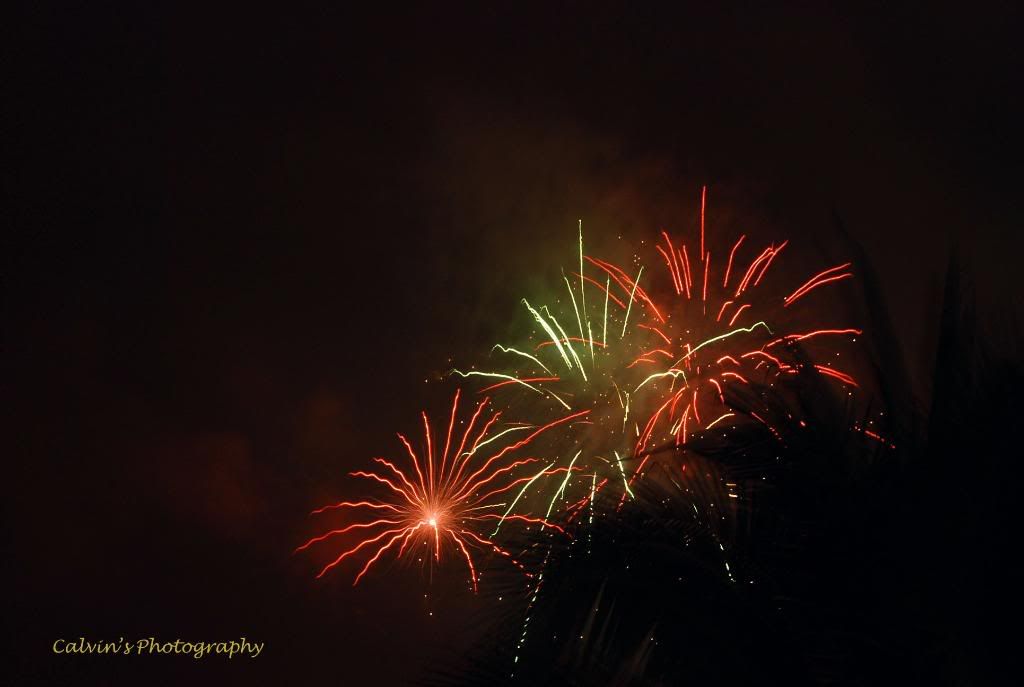
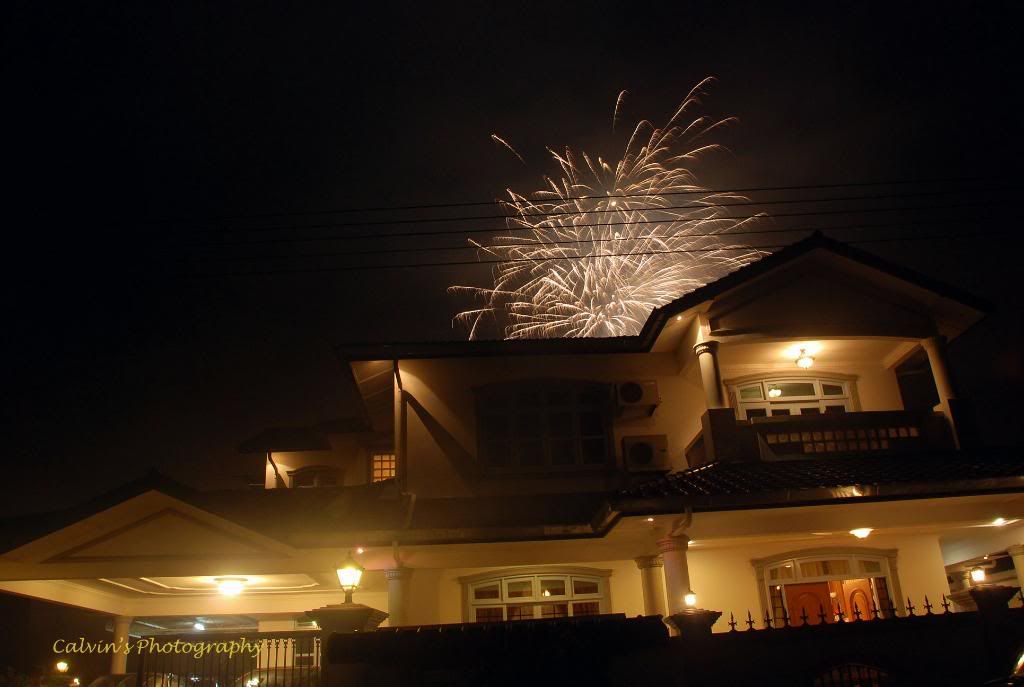
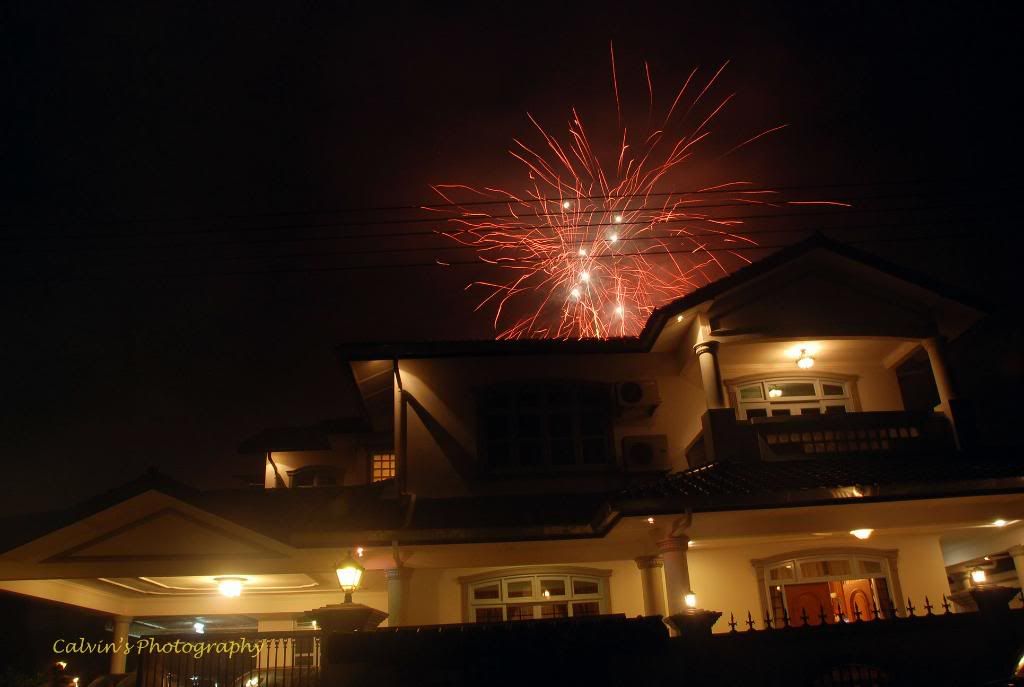


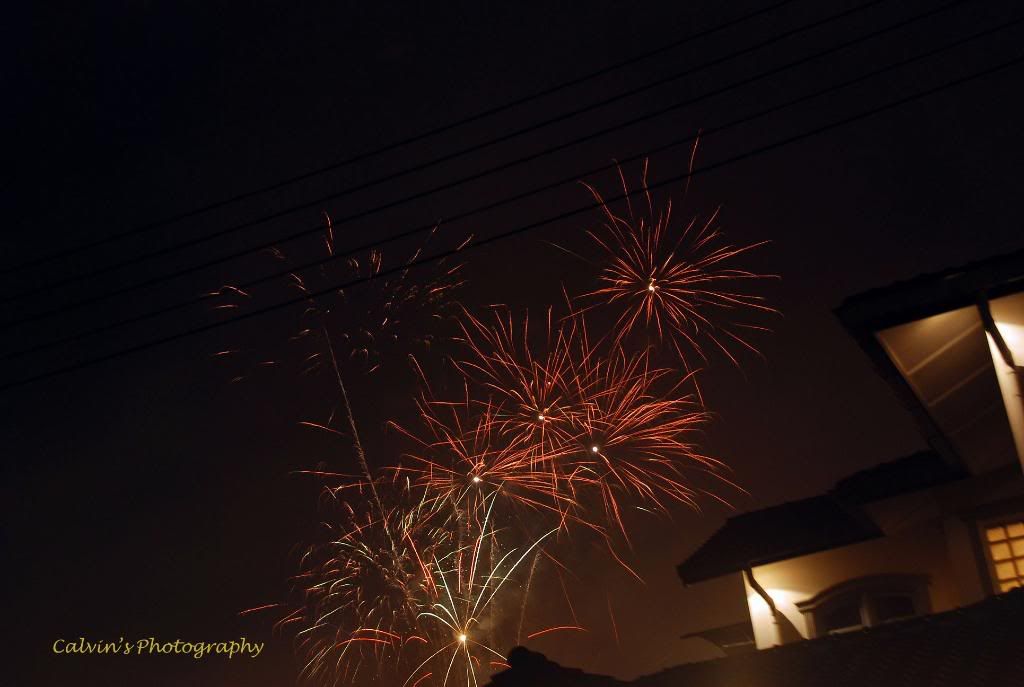
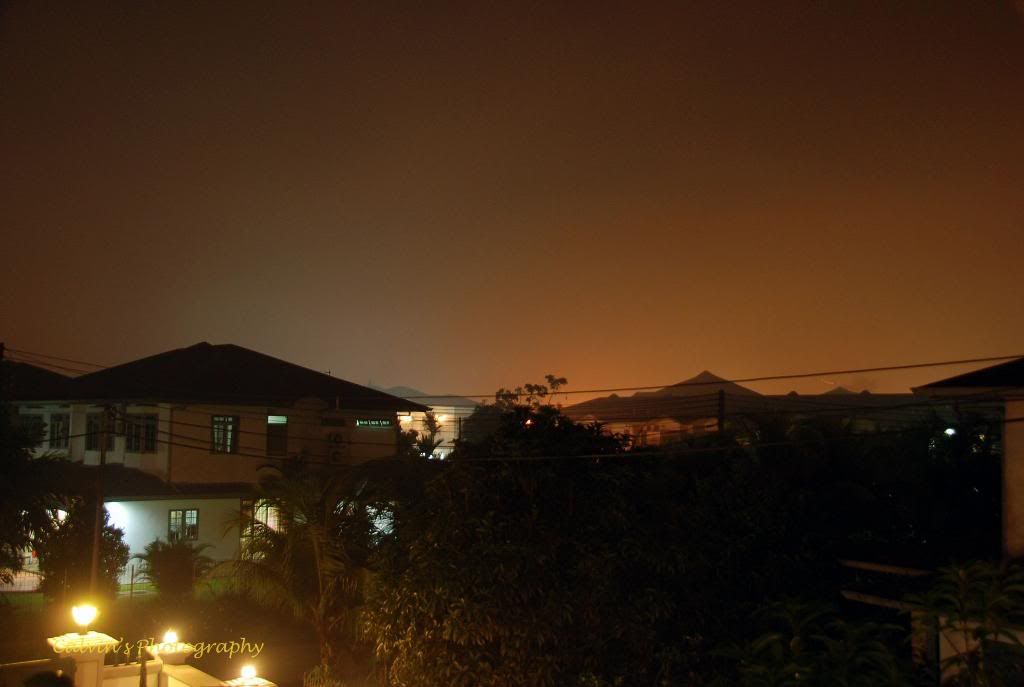






Posted by
Calvin's
at
2:57 PM
1 comments
![]()
Wednesday, February 06, 2008
Effect of Global Warming? China faces transport halt prior to Chinese New Year
 Though the days may be different, gathering with family and friends for major holidays is the same the world over. China’s biggest holiday, the Lunar New Year, prompts a mass migration (the largest on the planet, said BBC News) as tens of millions travel home. In 2008, however, travel proved nearly impossible. Snow storms closed roads and railroads across eastern, central, and southern China, reported BBC News.
Though the days may be different, gathering with family and friends for major holidays is the same the world over. China’s biggest holiday, the Lunar New Year, prompts a mass migration (the largest on the planet, said BBC News) as tens of millions travel home. In 2008, however, travel proved nearly impossible. Snow storms closed roads and railroads across eastern, central, and southern China, reported BBC News.
This image, captured by the Moderate Resolution Imaging Spectroradiometer (MODIS) on the morning of January 29, 2008, shows how extensive the snow cover is. The image encompasses most of eastern China, save the northernmost provinces and the cloud-covered southern coast. From north to south, nearly the entire country is covered in snow.
Unlike a photo, which uses the visible light that the human eye sees, this image includes both infrared light and visible light to provide a contrast between snow and clouds. Snow is red-orange, while clouds are white and peach. Some of the worst-affected provinces, such as Guangdong along the southern coast, were still under cloud cover when MODIS captured this image. Other areas, such as the North China Plain (where Beijing is located), are snow-free. The ground is green-blue, the shade of bare or sparsely vegetated earth in this type of image.
The snow storms started on January 10, spreading snow over 14 provinces and affecting approximately 80 million people, said BBC News on January 29. The snow destroyed crops and homes and led to power outages, BBC said. Coal shortages, made worse by the difficulty of transporting coal on snowy roads, caused additional power outages. Some of the more severely affected provinces are labeled in this image. These provinces are in the south, where snow is unusual.
References
BBC News. (2008, January 29). Transport chaos in snow-hit China. Accessed January 29, 2008.
BBC News. (2008, January 28). Chinese freeze strands thousands.
NASA image created by Jesse Allen, using data provided courtesy of the MODIS Rapid Response team. Caption by Holli Riebeek.
Posted by
Calvin's
at
10:53 AM
0
comments
![]()
Sunday, February 03, 2008
Online petition for Nian Ning
PENANG: Friends of Lee Nian Ning, a medical student who died in a bus accident on Jan 25, have set up a website to seek signatures for a petition on express bus safety that they will send to the Transport Ministry after Chinese New Year.
There is also an online forum at the website (http:// http://www.buscrashnomore.blogspot.com/) to discuss bus crashes in Malaysia.
Universiti Kebangsaan Malaysia law student Teo Lee Ken said the site had already received 17,000 hits and 3,750 e-signatures since it was set up on Jan 28.
He said the website with the theme: ‘If this happened to her, it can happen to you’ targeted students who use public buses.
“We don’t know how much we can change the situation but we know that something needs to be done and someone has to start something,” he told reporters while collecting signatures after the memorial service for Nian Ning at Mahindrama Buddhist Temple yesterday.
Nian Ning, 21, a medical student and Public Services Department scholar at the University of New South Wales in Australia, was killed in an accident when the double-decker express bus she boarded from Penang to Kuala Lumpur crashed near Slim River at 5.55pm on Jan 25.
Universiti Malaya (UM) engineering student Desmond Tan said the idea to set up the website and forum came from a mutual friend who is now studying in Wales.
“He was saddened by her passing and wanted to do something for her although he couldn’t be physically here.
“He then suggested that we start a website that could reach out to all people around the world and create awareness on the importance of bus safety and to draw public attention to together prevent such tragedies,” he said.
Tan said they are now working to get feedback and suggestions from students in local colleges and universities.
“We are really glad that some strangers who came to know us through the website have volunteered to become our representatives in their respective colleges and universities,” he said.
He said they would hand in the petition to the Transport Ministry and the bus company a week after Chinese New Year.
“However, the campaign will continue until we get at least 26,000 signatures.”
Nian Ning’s father Lee Hock Chuan, 50 said she had been looking forward to celebrating Chinese New Year together with the family.
“She had even baked some festive cookies with her mother earlier,” he said.
The Star Publications, 4th February 2008
Let us all sign on the petition and see what does the Transport Ministry has to say...Malaysian Government is just too reactive, not proactive in solving problems...Fatal bus crashes are jus too rampant lately and nothing has been done, to prevent it from happening; only reactive measures.
These measures such as checking on buses officers at stations, are they still carried on now? Is this what a Ministry should be doing? Reactive or Procative?
Posted by
Calvin's
at
11:45 PM
0
comments
![]()
Civic Type-R In ThE SprInG Kuching!!!
This engine is supported by specially engineered parts. Air intake and exhaust manifolds have been tuned for high revolution engine output whilst throttle activation is via drive-by-wire. It is also fitted with 6-speed close ratio manual transmission gearbox with Limited Slip Differential (LSD) to perfectly match rev range and torque curve.


 High speed in sharp corners
High speed in sharp corners
Fitted with 18-inch high performance Potenza RE070 tires, you’ll gracefully handle even the sharpest of corners at high speeds. Previously used in the Honda NSX-R, these tires are designed with the trademark Potenza tread pattern and advanced silica compound material throughout its 18-inches for a tighter, tougher grip.
Bridgestone Potenza RE070
OutsideLess -grooved, big-block tread pattern for increased tread rigidity at high cornering roads.
Inside-Highly grooved tread pattern

Within the 18-inch Potenza tires lies a set of huge 17-inch disc brakes with 4-piston Brembo calipers, so stopping distance is shortened and fade resistance improved. This allows you to maintain high speed even during hard braking.
 Decreased drag force
Decreased drag forceSpecial surface coating as used in the Honda NSX is applied to the cylinder head port. This reduces roughness by 40%, increasing an approximate output of 2PS.

Engine
Engine Type - 4 Cylinder, 16 Valve, DOHC i-VTEC
Fuel Supply System - PGM-FI (Programmed Fuel Injection)
Bore & Stroke (mm) - 86.0 x 86.0
Displacement (cc) - 1,998
Compression Ratio - 11.7:1
Maximum Power [PS (kW) / rpm] - 225 (165) / 8,000
Maximum Torque [Nm (kg-m) / rpm] - 215 (21.9) / 6,100
Drive-by-Wire
Transmission Type
6 Speed Close Ratio Manual with Limited Slip Differential
Drive Wheels - Front
Gear Type - Rack & Pinion with Power Assisted (Hydraulic Power Steering)
Overall Steering Ratio
Turning Radius (m) - 5.9
Braking System Type (Front) - Brembo 4-Piston Aluminium Caliper with 320mm Ventilated Dc
Braking System Type (Rear) - 282mm Solid Disc
Suspension System (Front) - MacPherson Strut
Suspension System (Rear) - Reactive Link Double Wishbone
Overall Length (mm) - 4,540
Overall Width (mm) - 1,770
Overall Height (mm) - 1,430
Wheelbase (mm) - 2,700
Treads (Front) (mm) - 1,505
Treads (Back) (mm) - 1,515
Ground Clearance (mm) - 135
Weight (kg) - 1,270 -
Fuel Tank Capacity (Litre) - 50
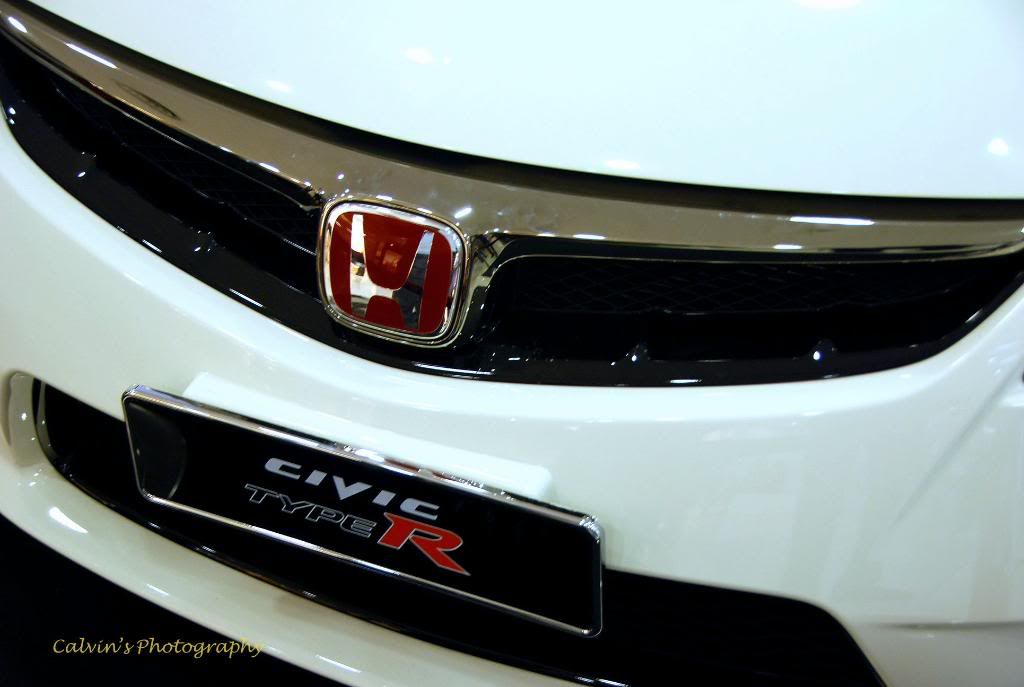
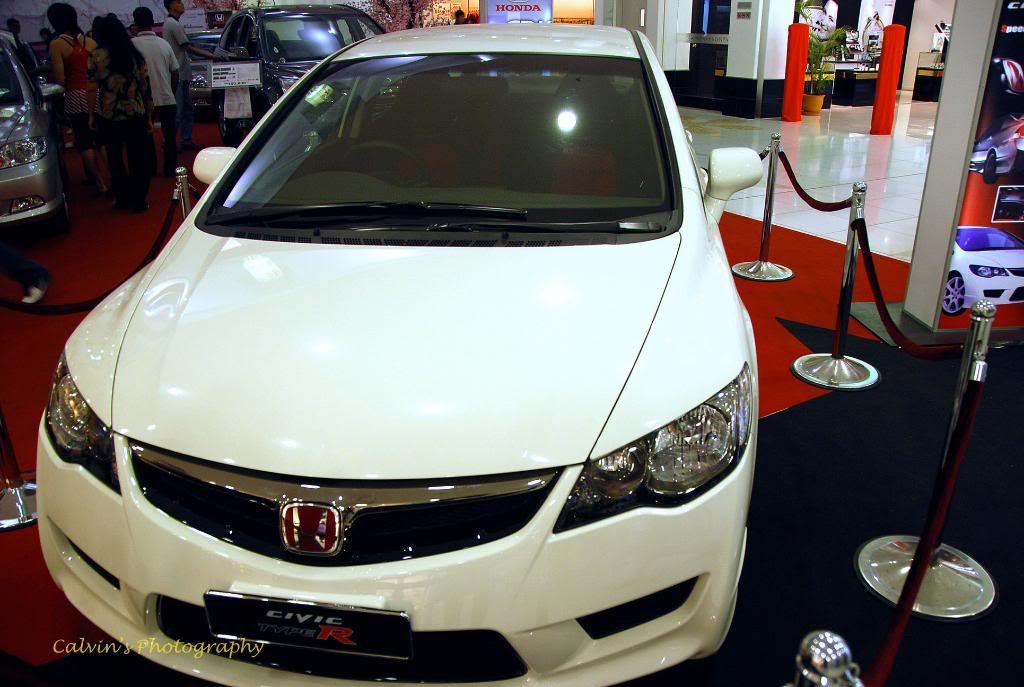

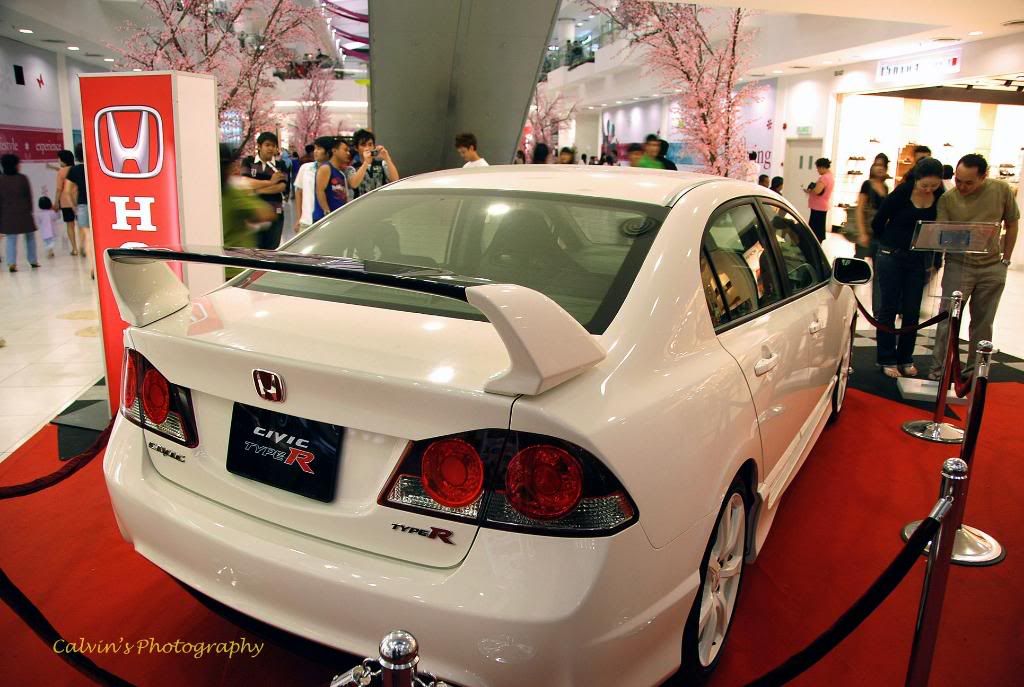
Costing around RM210,000 on the road, its really a piece of ultimate machine to consider..!! Driving it is way better than a BMW 320i to me...how i wish tat white machine can be drive by me!!dreamz...
Posted by
Calvin's
at
11:05 PM
0
comments
![]()
My First Fireworks test shot..
These fireworks were let off near my house...and these pics are shot from my balcony...drop some comments? The one with purple is jus so magnificient..


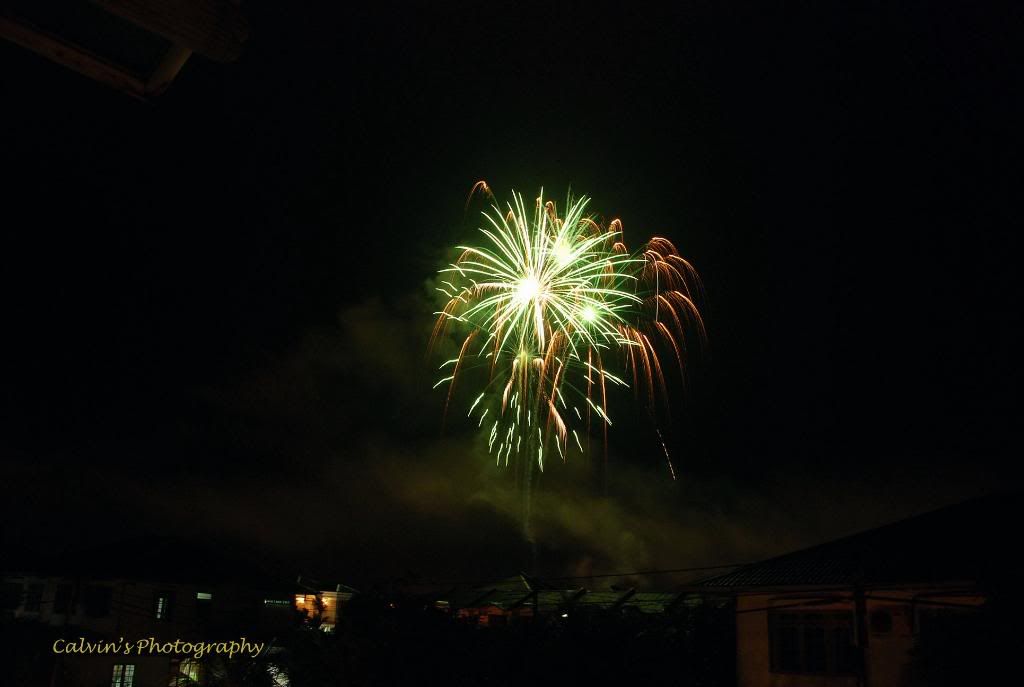






Posted by
Calvin's
at
10:27 PM
2
comments
![]()
Saturday, February 02, 2008
The result of arriving too early at LCCT


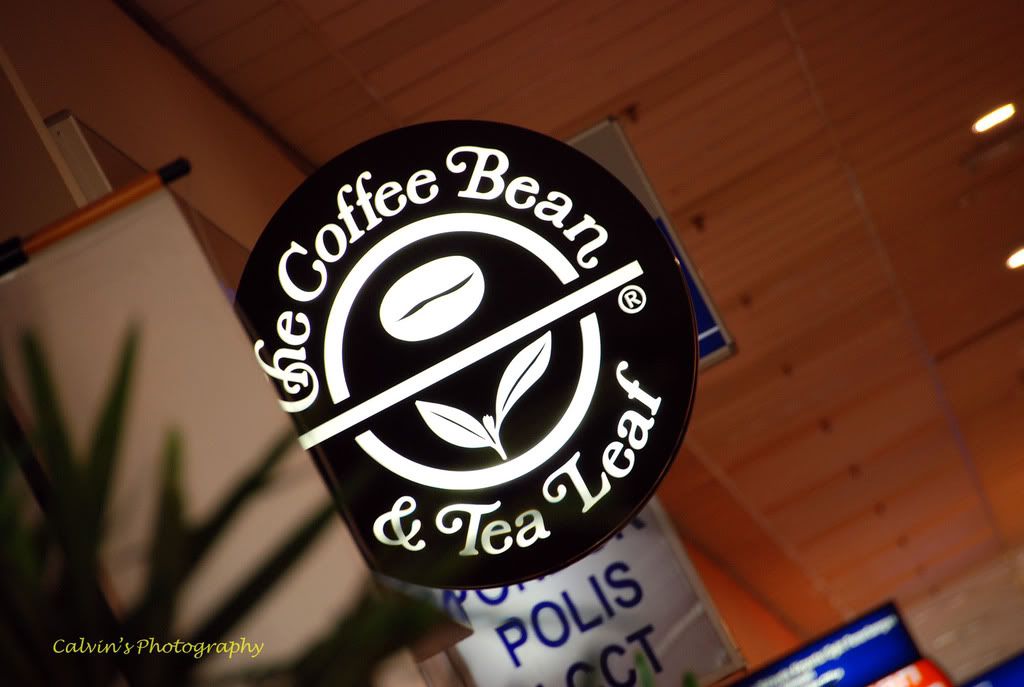

Reading Digital Photography, indulging a cup of "the Ultimate"; messy table filled with cups and even boarding pass...wasting time, watches time passes at Coffee Bean LCCT...
Posted by
Calvin's
at
8:04 PM
0
comments
![]()

